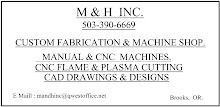Today I finally got back into the shop for an hour. I had been laid up with the flu for a few days, but now I have a week off. Other than a trip to Seattle, dropping a few trees, helping my son with his science project, and nursing my back, I have nothing to else to do.
I started by removing the dampner. The unmistakable smell of locktite, not to mention the hernia in my gut, tells me these bolts were put in to stay. (note to self: Get the four dampner bolts off the head and into a labeled bag, Dummy.)

Having removed a cummins timing cover before, I knew there were different length bolts holding it on. Some go through the cover and case and into the block (long). Others just hold the cover to the case (short).
To avoid confussion upon reassembly, I made a map of the cover. At the bottom I traced each size bolt and labeled the long bolts "1" and the short "2." I also indicated any "special" doodads different bolts, such as on extended "1" and one extended "2" that hold the factory tach pick-up.

The first thing I checked upon removing the timing cover was the infamous killer-dowel-pin (KDP). This dowel is used by the factory to aid assenbly. Other than that its only purpose is to, perhaps, strengthen the block to case attachment. The dowel pin won its name, Killer, and its infamy from its habit of backing out of its home and taking a ride through the timing gears. Personally, I make a habit of "killing" the KDP anytime I have the timing case open or if I even have easy access, such as if the rediator is out. The KDP can be killed by either peening the aluminum case around the dowel pin hole with a punch or by fabbing a tab to cover the hole. The tab can be held in place by the case attachment bolt immediately to the right of the pin.
I am getting tired of my crappy camera, but I don't dare take the wife's camera out into the grease. Anyway, this is my before image. I was hoping you would be able to see that the end of the pin was on the same plane as the shoulder of the neighboring case bolt.

After tapping on the pin with a punch, it went in about 3/16 of an inch. It is generally assumed that the dowel pin is bottomed out upon assembly. I do not know if this is the case, but if it is, mine was on its way out. Not knowing how many miles were on this engine, I have no way of knowing how much time before...Boom. My guess issomewhere around a million more miles. If its only gone 3/16 inch in most likely 2-300,000 miles, it was not in a hurry.

Another note: The last pin I killed, on my ramcharger project, some of the case bolts were loose. I mean, not even finger tight. One of these coming out will do as much damage as the dowel pin. It is also standard procedure to clean the bolts and holes and retorque them with locktite. The crank needs to be rotated to expose hidden bolts behind gears.
I an not sure but it looks like the outer lip on the cover seal was wearing too close to the end of the crank. It was clearly leaking. When I replace the seal, I will set it a little deeper in the cover.
EDIT: my research shows that I am timed correctly.

A pic of the gears waiting for me to get back at it.
 Hanging from the engine hoist, ready to go in.
Hanging from the engine hoist, ready to go in. Splines engaged, searching for the pilot bearing.
Splines engaged, searching for the pilot bearing. She's home. Chain is slack.
She's home. Chain is slack. The block is bolted to the cross-member. The transfer case is mounted-up. The taped-up u-joint is on the 1977 short drive shaft with the carrier bearing. You can see that it is the wrong u-joint. Something to deal with another day. That short shaft will most likely be a custom length anyway. I will need to fing a replacement yoke when I get it modified.
The block is bolted to the cross-member. The transfer case is mounted-up. The taped-up u-joint is on the 1977 short drive shaft with the carrier bearing. You can see that it is the wrong u-joint. Something to deal with another day. That short shaft will most likely be a custom length anyway. I will need to fing a replacement yoke when I get it modified. Another angle.
Another angle. And...the other side.
And...the other side. Not sure what to do next. I need to strip the new cab of the flooring and dash and take whatever is remaining off the firewall. I also need to deal with some rust issues on the core support and modify it to accept the ctd radiator and the second generation Dodge Cummins intercooler. I am still hoping to get my 1975 grill over the intercooler, but I won't know about that for a while yet.
Not sure what to do next. I need to strip the new cab of the flooring and dash and take whatever is remaining off the firewall. I also need to deal with some rust issues on the core support and modify it to accept the ctd radiator and the second generation Dodge Cummins intercooler. I am still hoping to get my 1975 grill over the intercooler, but I won't know about that for a while yet.
































 Right again.
Right again.
 Yep.
Yep.













